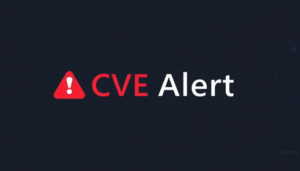[DRAGONFORCE] – Ransomware Victim: GB Mail
![[DRAGONFORCE] - Ransomware Victim: GB Mail 1 image](https://www.redpacketsecurity.com/wp-content/uploads/2024/09/image.png)
NOTE: No files or stolen information are exfiltrated, downloaded, taken, hosted, seen, reposted, or disclosed by RedPacket Security. Any legal issues relating to the content should be directed at the attackers, not RedPacket Security. This blog is an editorial notice informing that a company has fallen victim to a ransomware attack. RedPacket Security is not affiliated with any ransomware threat actors or groups and will not host infringing content. The information on this page is automated and redacted whilst being scraped directly from the DRAGONFORCE Onion Dark Web Tor Blog page.
AI Generated Summary of the Ransomware Leak Page
The leak page attributed to the DragonForce ransomware group identifies GB Mail as a victim. GB Mail is described on the page as a privately owned mailing house based in the United Kingdom’s Home Counties, emphasizing reliable service and full delivery. The services listed include storage and fulfilment, postal solutions, print personalisation, database cleansing, international mail, direct mail, and subscription mail. The entry is timestamped with a post date of 2025-11-07 22:19:06.018003; since no compromise date is provided, this is treated as the leak’s publication date. The post does not specify whether the attack involved encryption or a data leak, as the impact field is left blank in the data. There is no ransom figure disclosed in the provided information. The page contains no visible screenshots or images (images_count is 0) and indicates no downloadable content. A claim URL is noted as present, suggesting the attackers included a link to a ransom or claims page, though the content of that claim is not included here.
From a threat intelligence perspective, the GB Mail entry highlights a focus on a UK-based mailing and fulfilment provider, presenting the company’s profile rather than detailed data samples. The lack of explicit impact details, ransom figures, screenshots, or downloadable content limits the ability to assess the breach’s scope or severity from this entry alone. The post date serves as the observable timestamp, with no corroborating compromise date provided, leaving the incident timeline ambiguous beyond publication. The presence of a claim URL indicates the attackers’ intent to direct readers to a claims or ransom note, but the dataset does not include the actual content. Security teams monitoring similar service providers should remain vigilant for further updates from the group and consider strengthening controls around mail processing, storage, and fulfilment workflows where possible.
Support Our Work
A considerable amount of time and effort goes into maintaining this website, creating backend automation and creating new features and content for you to make actionable intelligence decisions. Everyone that supports the site helps enable new functionality.
If you like the site, please support us on Patreon or Buy Me A Coffee using the buttons below.

![[DRAGONFORCE] - Ransomware Victim: GB Mail 2 image](https://www.redpacketsecurity.com/wp-content/uploads/2024/09/image-300x300.png)

![Cobalt Strike Beacon Detected - 8[.]153[.]205[.]30:8080 6 Cobalt-Strike](https://www.redpacketsecurity.com/wp-content/uploads/2021/11/Cobalt-Strike-300x201.jpg)
